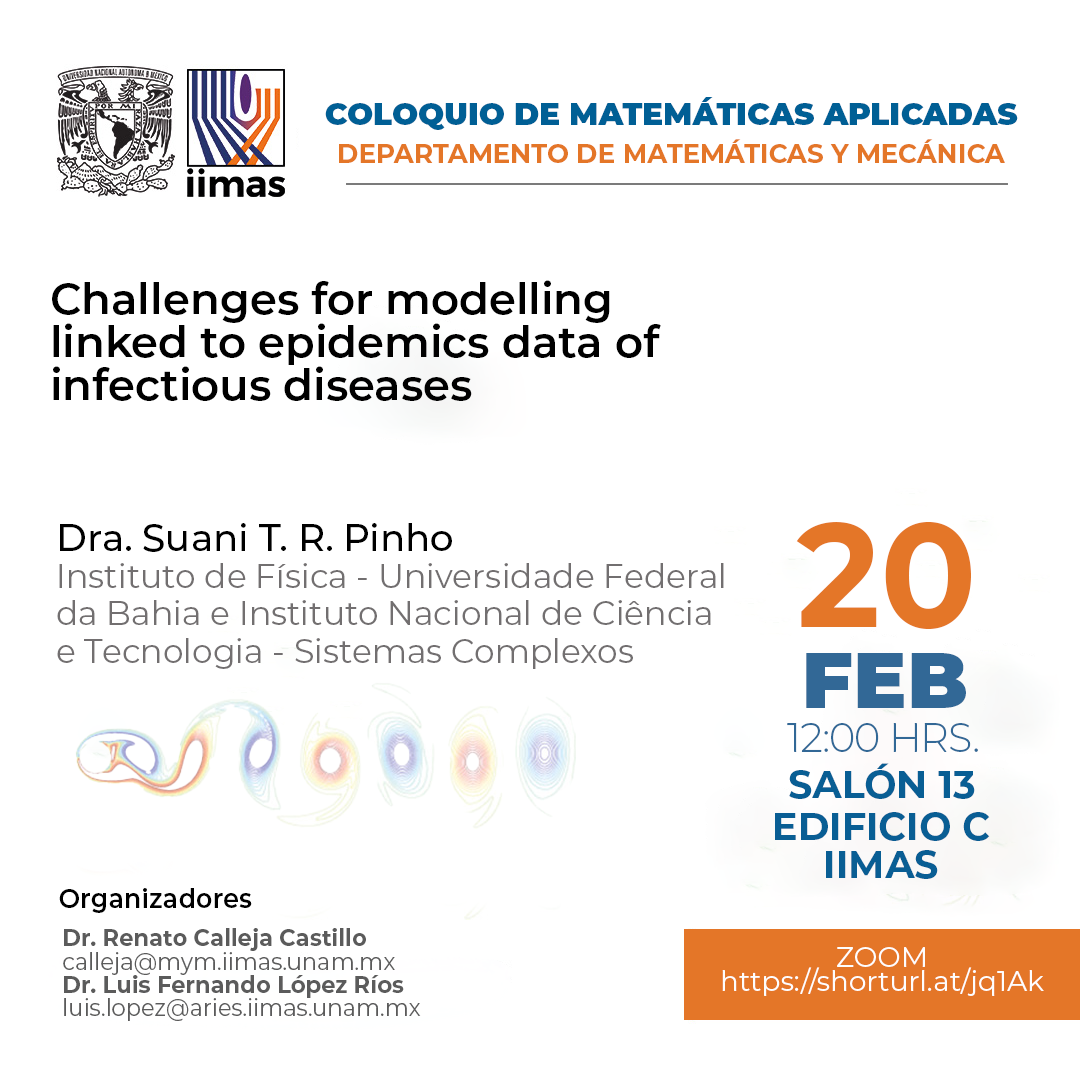

Resumen
The dynamics modelling of communicable diseases has gained wide visibility during COVID-19 pandemics. Since the simplest SIR (Susceptible-Infected-Recovered) model was proposed in 1927 by Kermarck and Mc Kendrick, many generalizations were done as well as their results are confronted to real data. Consider the heterogeneities able to catch the essential features of the dynamics without introducing too many details in the construction of the models is one of the most relevant challenges of modelling dynamical systems, and in particular the transmission process of communicable diseases. Another challenge is to construct ubiquitous models able to catch different patterns based on epidemics data [1,2] as well as to predict hypothetical scenarios mainly for the control of diseases [3]. Linking model to notified epidemics data maybe more complex in the context of co-circulation of viruses [4,5]. In order to provide good estimation and prediction, despite sub-notifications of epidemics data, we emphasize the role of reproduction number and our contribution generalizing the next-generation method to estimate the effective reproduction number as a measure associated with both the notification data and the probability distribution of generation time interval [6]. Besides epidemics data, the diversity of data such as environmental data for vector-borne transmitted diseases and mobility data for directly transmitted diseases, are also used to describe the complex behavior of transmission. In this presentation, we exhibit some results based on heterogeneous models, mainly for COVID-19 [1,2,6] and Dengue[3,4,5], linked to epidemics data in Brazil, highlighting the above features and the role of reproduction numbers to provide precise estimation for even as early alert of unknown epidemics and pandemics.
References
[1] Oliveira, JF; Jorge, DCP; Veiga, RV; Rodrigues,MS; Torquato, MF; da Silva,NB; Fiaccone, RL; Cardim, LL; Pereira, FAC; de Castro,CP; Paiva, ASS; Amad,AAS; Lima, EABF; Souza, DS; Pinho, STR; Ramos, PIP; Andrade, RFS; RedeCoVida working group, Nature Communications 12 (2021) 333.
[2] Jorge, DC; Rodrigues, MS; Silva, MS; Cardim, LL; Silva, NB; Silveira, IH;Silva, VAF; Pereira, FAC; Pinho, STR; Andrade, RFS; Ramos, PI ; Oliveira,JF. Epidemics 35 (2021) 100465.
[3] Cardim, LL; Pinho, STR; Teixeira, MG; Costa, MCN; Esteva L; Ferreira,CP. BMC Public Health 19 (2019) 155.
[4] de Araujo, RGS; Jorge, DCP; Dorn, RC; Cruz-Pacheco, G; Esteva, MLMand Pinho, STR. Math. Biosc. 360 (2023) 109013.
[5] Hirata, FMR; Jorge,, DCP; Pereira, FAC; Skalinski, LM; Cruz-Pacheco,G; M.L.M. Esteva, MLM; and Pinho, STR. Chaos Solit. Fractals 173 (2023)113599.
Imparte
Dra. Suani T. R. Pinho
Instituto de Física – Universidade Federal da Bahia e Instituto Nacional de Ciência e Tecnologia – Sistemas Complexos
Zoom: https://shorturl.at/jq1Ak
Informes
luis.lopez@aries.iimas.unam.mx